
SIGCO manufactures laminated glass–a multi-purpose glazing material that is used in a variety of residential and commercial applications. Laminated glass can be used anywhere that building codes require safety glass, and is required in applications where it is critical that broken glass remain in the opening; whether it is to reduce the risk of injury or to maintain the building envelope from natural or man-made threats.
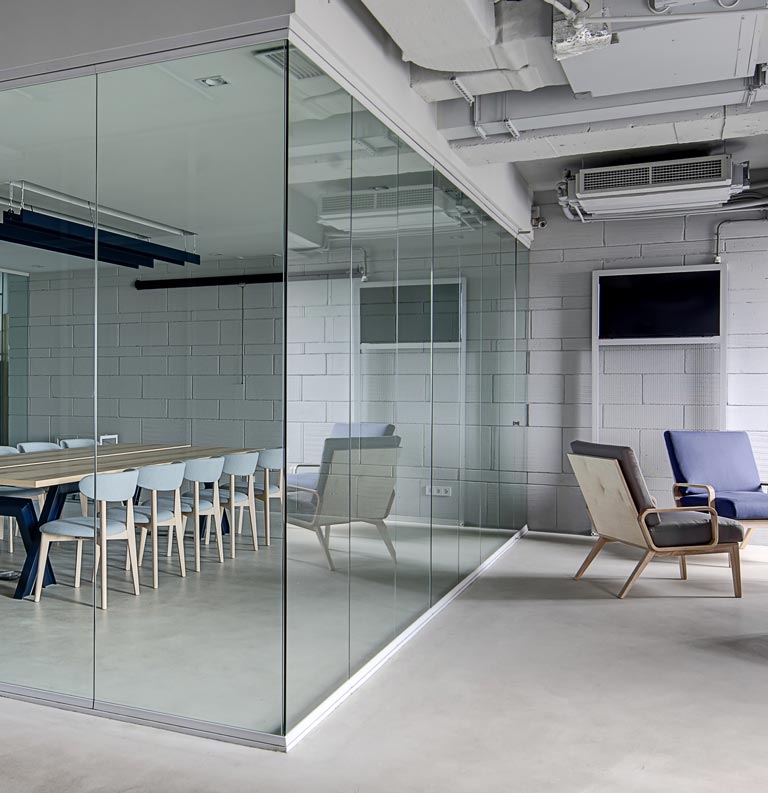
Applications
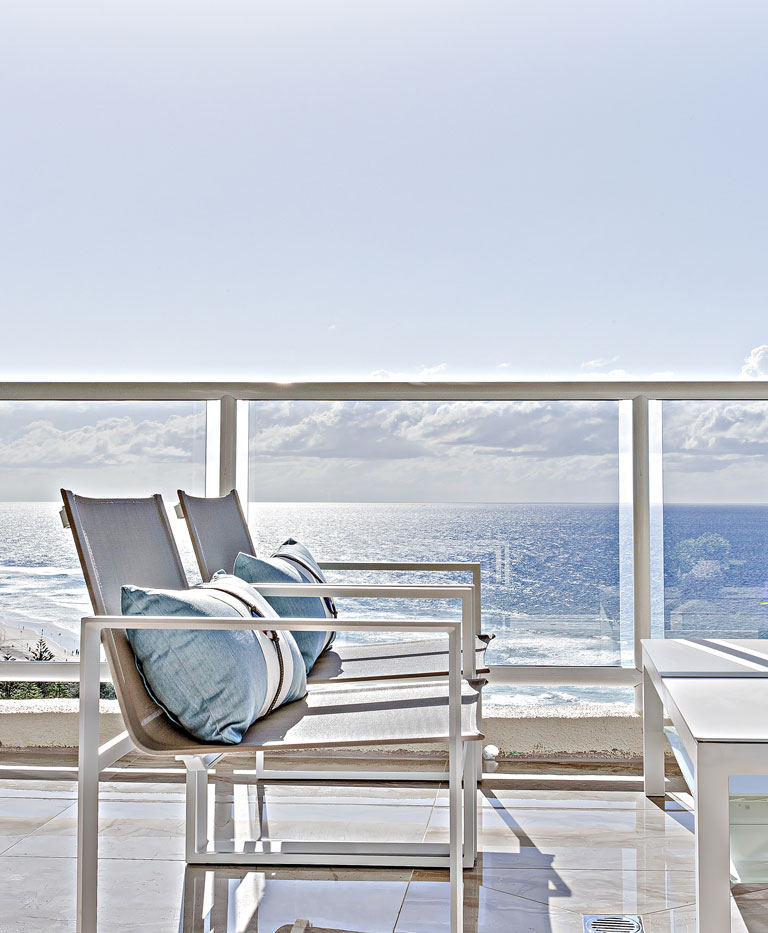
Storm
Increasingly, coastal areas are requiring laminated glass that will meet impact from wind-borne debris. For applications less than 30 feet above grade, “large missile” impact standards are required. For units up to 25 square feet and design pressures up to 65 psf, laminated glass with an 0.060” (1.52mm) PVB is usually used. For applications more than 30 feet above grade, “small missile” impact standards are required. Usually an 0.060” (1.52mm) PVB is adequate.
For larger and higher performance applications, thicker interlayers, a High Performance PVB or an ionomer interlayer can be required. These HP PVB and ionomer interlayers are much stiffer than standard PVB and can sustain much greater design pressures and larger sizes.
Again, It is important the glass and framing be tested together to assure performance. Your hurricane framing manufacturer can provide information on what glass assemblies have been tested with their specific framing system.
Security
Laminated glass with a PVB or ionomer thickness of 0.060” (1.52mm) and greater is often used to deter forced entry and “smash and grab” attacks.
Laminated glass is an excellent choice in all types of buildings that may be targets of bomb blasts. The proper interlayer can hold the glass together after an impact and retain the glazing in the opening. Typically annealed or heat strengthened glass is used, with an interlayer of at least 0.060” (1.52mm). It is important that the glass and framing be tested together to assure performance. Your framing manufacturer can provide information on what glass assemblies have been tested with their specific framing system.
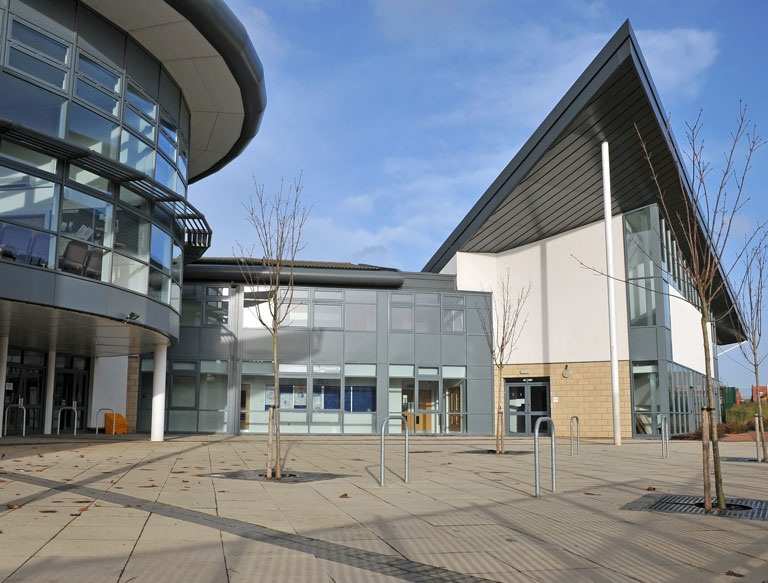
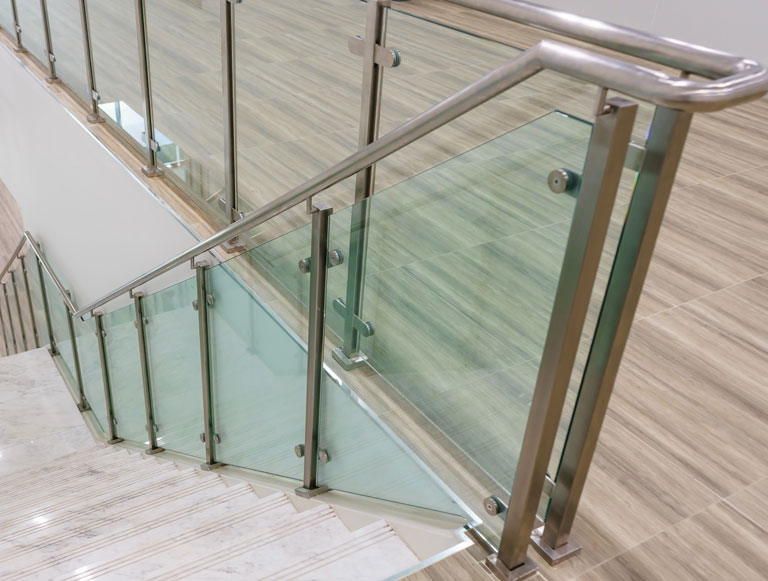
Safety
Like fully tempered glass, laminated glass with a PVB thickness of 0.030” (0.76mm) and greater or with an ionomer interlayer meets the requirements of ANSI Z97.1 and also meets the requirements of CPSC 16 CFR 1201 Category II. As such, it can be used wherever safety glass is required. Laminated glass is approved by code in sloped applications (more than 15 degrees off vertical), overhead, in guards and railings as well as underfoot. When using underfoot, be sure to consider issues like scratching, slip resistance and modesty when occupied spaces are below the floor.
Style
Colored PVB interlayers can be combined to create an almost endless array of colors and experiences. When specifying colored interlayers, remember to consider the color of the glass lites. Unless the colored interlayer assemblies are symmetrical, the appearance will be different from each side of the laminated glass assembly. A clear layer should always be used next to a coating.
Opaque black and opaque white interlayers are also available.
Sound
Laminated glass is a proven, effective solution for sound reduction. When designing for sound attenuation, asymmetric lite constructions and wide sealed airspaces are most effective in improving acoustic performance. Premium, softer interlayers specifically designed to reduce sound transmission are also available. When specifying laminated glass for sound performance, be sure to also consider acoustic framing or window choices.
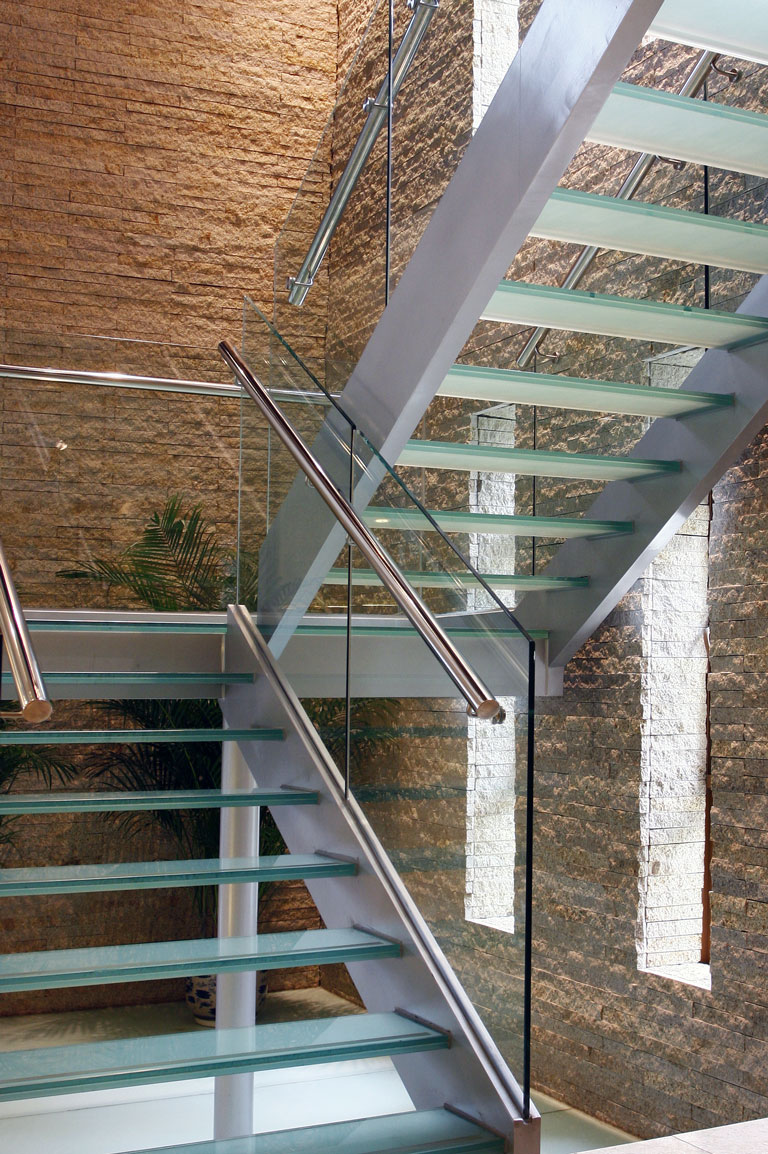
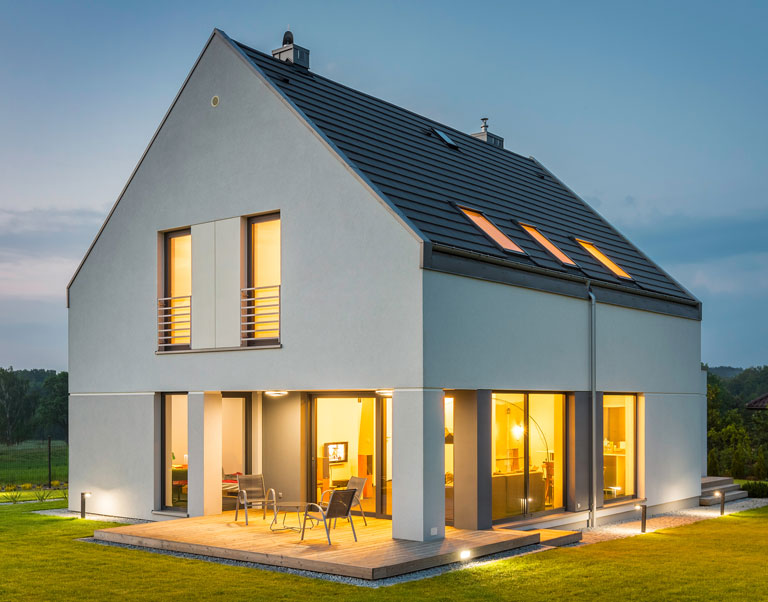
Solar
Standard PVB and ionomer materials block more than 99% of the ultra-violet light in the spectrum (300-380 nanometers). As such, laminated glass is an excellent choice to reduce fading of rugs, furniture and art work. Plant growth is not typically affected by eliminating UV light. When required, specially formulated interlayers can be specified that allow UV light to be transmitted.
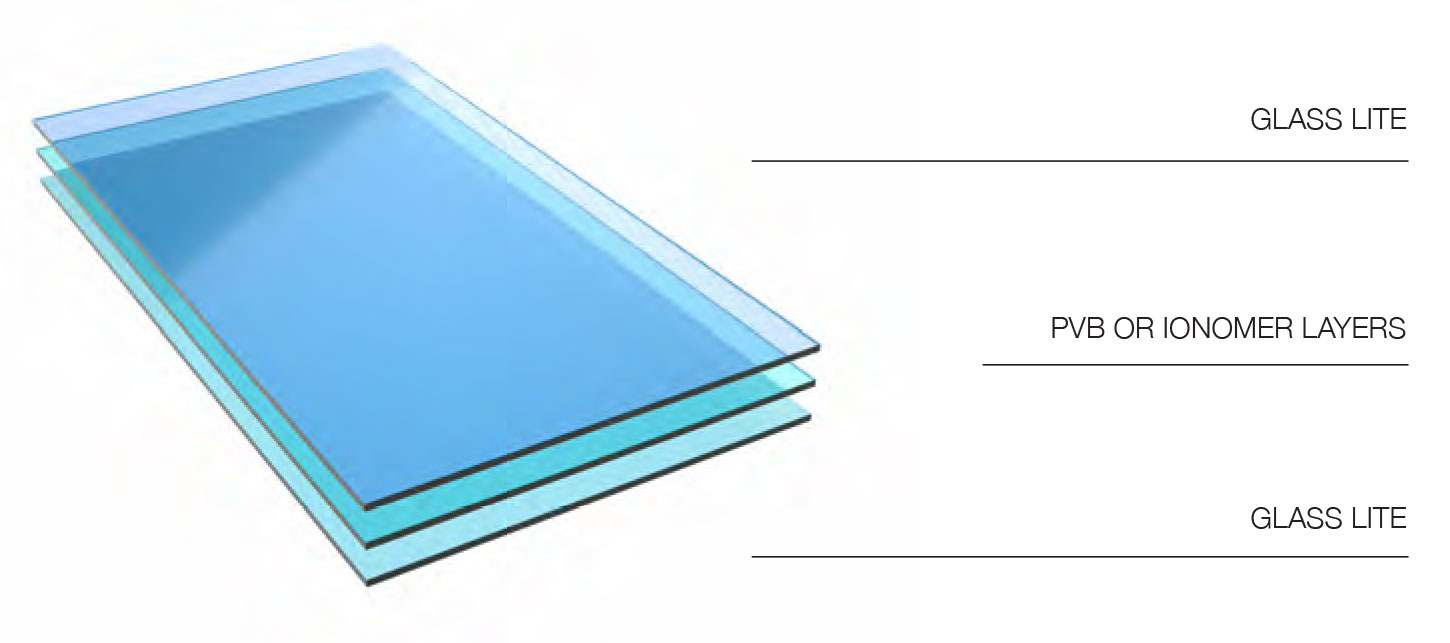
Laminated glass is manufactured by permanently bonding two, or more, lites of glass with one, or more, layers of polyvinyl butyral (PVB) or ionomer material. The assembly is built in a clean room with positive pressure and controlled temperature and humidity. After assembly, the final bonding occurs in our inhouse autoclave under heat and pressure.
The glass used in the assembly can be clear, low-iron, tinted or coated. SIGCO is certified by both Guardian Industries and by Vitro® to laminate their full range of coatings. The lites may be annealed, heat strengthened or fully tempered. The thickness of the lites can be symmetric or asymmetric. Laminated glass can be the outboard, inboard, or both lites of a sealed insulating glass unit. Prior to lamination, the glass can be drilled, notched, have the edges polished, or have a spandrel paint application. This flexibility allows a wide range of aesthetic characteristics and performance requirements to be met.
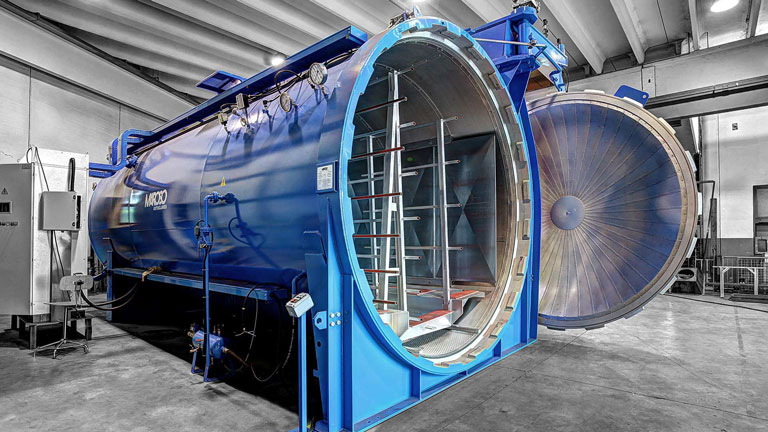
Laminated glass is manufactured by SIGCO to meet ASTM standards C-1036, C-1172, and if heat treated, C-1048. SIGCO laminated glass meets ANSI Z97.1 as well as CPSC 16 CFR 1201 Category II. SIGCO is a proud participant in the Safety Glazing Certification Council (SGCC) certification program.
Design of glazing is ultimately the responsibility of the A/E professional, so a qualified engineer with experience with glass design should always be consulted during design development and construction documentation. In addition to selection of the glazing, appropriate framing and compatible sealant selection should be reviewed.
